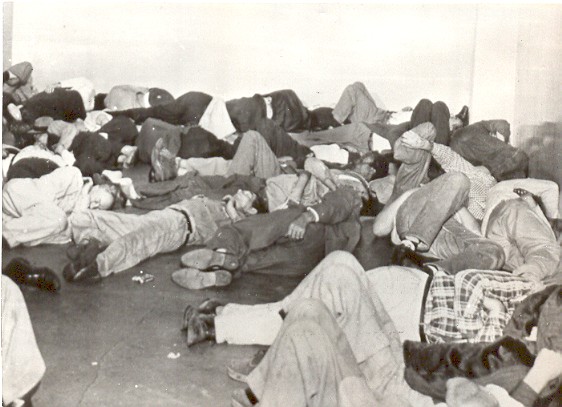Schwarz
View current page
...more recent posts
De l'Ecotais reveals the difference between the working methods of the two pioneers of the absurd: "Marcel Duchamp looked for his ready-mades in department stores, randomly, at a given moment. He then gave them titles and signed them. Man Ray, on the other hand, usually constructed images from everyday objects, which were then deliberately transformed by photography. It is the fact of being reproduced and relabelled which gives life to the objects."
So I guess Man Ray, who died in 1976, would have been delighted at the two dates on the Canberra label. But would he insist on the new versions being destroyed so that a third date might be added in future? As Umberto Eco famously wrote: "When originals no longer exist, the last copy is the original."
.........................................................................................................................................................................
"Gentlemen, I will now show you this text. Forgive me for using a photocopy. It's not distrust. I don't want to subject the original to further wear." "But Ingolf's copy wasn't the original," I said. "The parchment was the original." "Casaubon, when originals no longer exist, the last copy is the original."
-- Foucault's Pendulum, Chapter 18
"From the beginning, Olmsted and Vaux strenuously opposed all attempts to introduce art into the park. In their Greensward Plan of 1858—the competition entry that won them the commission—they wrote that while it would be possible to build elegant buildings in the park, "we conceive that all such architectural structures should be confessedly subservient to the main idea, and that nothing artificial should be obtruded on the view." They considered art a similar distraction from the restorative purpose of the landscape and kept statues out of the park. The sole exceptions were Emma Stebbins's Angel of the Waters, atop the Bethesda Fountain, and a series of figures representing prominent Americans that were to adorn the Terrace, but were never erected due to a shortage of funds."
By not burying a thing the dirt enters into the concept, and little enough separates the dirt inside the excavation from that outside.
Claes Oldenburg
"This account of Earthworks, sculptures best known as enormous mounds and excavations in remote wilderness environments, begins by looking into a hole dug in New York City's Central Park. The very fact that on Sunday, October 1, 1967, an excavation as a work of art was produced by Claes Oldenburg, one who can not be considered an earthworker but who was an innovator in the realms of Happenings and Pop Art, suggests the status in the art world at that time of working with geological material. Exactly a year later, at the Dwan Gallery in New York City, documentation of this work and also other sculpture by Oldenburg would go on view among sculpture by nine other artists in the exhibition earth works, the debut of the genre. Dug a year before that show brought the movement to widespread public attention, Oldenburg's temporary trench epitomizes the multiple sources of Earthworks and the relation of these works to the "dirt" around them."
L.A. drunk tank, 1955

